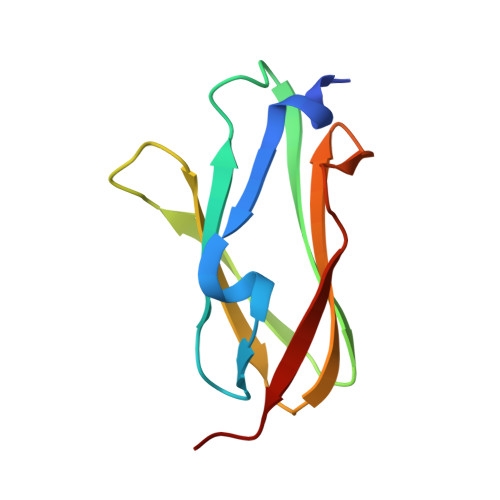The Molecular Basis of Filamin Binding to Integrins and Competition with Talin.
Kiema, T., Lad, Y., Jiang, P., Oxley, C.L., Baldassarre, M., Wegener, K.L., Campbell, I.D., Ylanne, J., Calderwood, D.A.(2006) Mol Cell 21: 337
- PubMed: 16455489
- DOI: https://doi.org/10.1016/j.molcel.2006.01.011
- Primary Citation of Related Structures:
2BRQ - PubMed Abstract:
The ability of adhesion receptors to transmit biochemical signals and mechanical force across cell membranes depends on interactions with the actin cytoskeleton. Filamins are large, actin-crosslinking proteins that connect multiple transmembrane and signaling proteins to the cytoskeleton. Here, we describe the high-resolution structure of an interface between filamin A and an integrin adhesion receptor. When bound, the integrin beta cytoplasmic tail forms an extended beta strand that interacts with beta strands C and D of the filamin immunoglobulin-like domain (IgFLN) 21. This interface is common to many integrins, and we suggest it is a prototype for other IgFLN domain interactions. Notably, the structurally defined filamin binding site overlaps with that of the integrin-regulator talin, and these proteins compete for binding to integrin tails, allowing integrin-filamin interactions to impact talin-dependent integrin activation. Phosphothreonine-mimicking mutations inhibit filamin, but not talin, binding, indicating that kinases may modulate this competition and provide additional means to control integrin functions.
Organizational Affiliation:
Biocenter Oulu, Department of Biochemistry, University of Oulu, FIN-90014 Oulu, Finland.

















